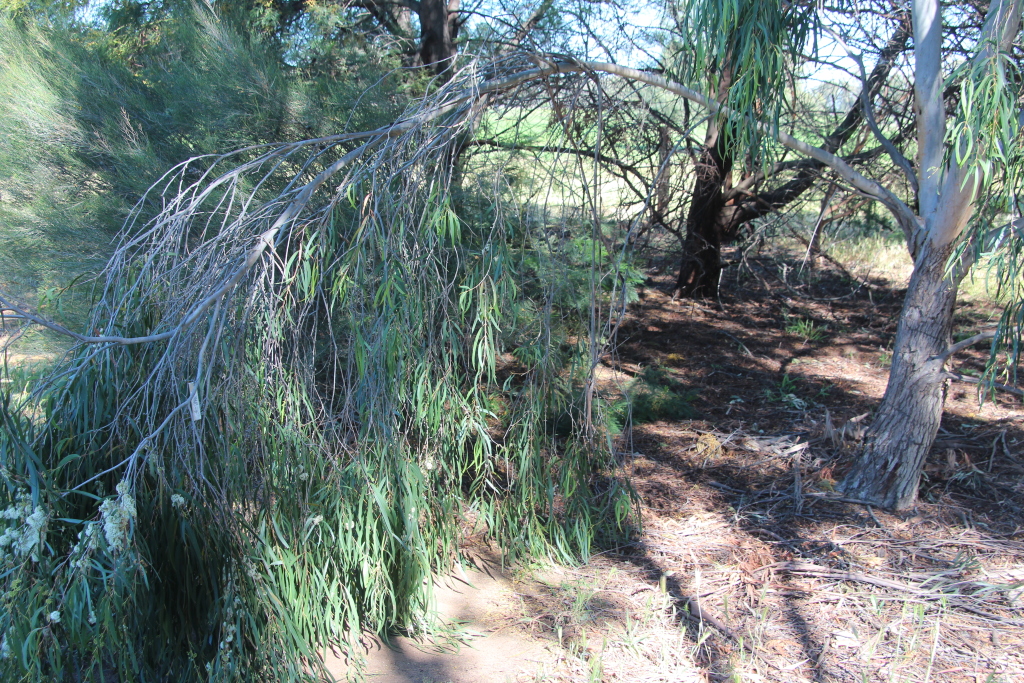Eucalyptus elata
Dehnh. Wang-ngaraTree to 40 m tall with compact, dark grey rough bark on lower part of trunk, upper trunk smooth, and crown ribbony; rarely a smooth-barked mallee. Juvenile leaves sessile, opposite for many pairs, lanceolate, to 12 cm long, 2.8 cm wide, green; adult leaves petiolate, alternate, narrowly lanceolate, 9–15 cm long, 0.7–1.5 cm wide, concolorous, glossy, green: intramarginal vein remote from edge; reticulation very sparse, with numerous island oil glands. Inflorescences axillary, unbranched; peduncles to 1.2 cm long, 9–30(or more)-flowered; buds on slender pedicels, clavate, to 0.5 cm long, 0.3 cm diam., no scar (single operculum); operculum hemispherical to conical; stamens mostly inflexed; anthers dorsifixed, reniform; ovules in 2 vertical rows; flowers white. Fruit pedicellate, truncate-globose, to 0.6 cm long, 0.6 cm diam.; disc descending; valves 3 or 4, below rim; seed brown, glossy, smooth, pyramidal but distorted by one curved face, hilum terminal. Flowers Aug.–Dec.
GipP, CVU, NIS, EGL, EGU, HSF, HNF, MonT, HFE. Also NSW. Common in the east along rivers in lower foothills west to Bairnsdale, but with outliers near Heyfield and east of Mt Useful.
Usually recognized as a tall straight-trunked tree with dark compact rough bark on the lower trunk, crown of narrow, highly-scented leaves, and with conspicuous ribbons of loose bark. In a few exposed, elevated, rocky sites (e.g. Little River Gorge and Bare Hills near Wulgulmerang and on dry hills above the Macalister River it grows as a smooth-barked mallee (see also E. ornans).
A 19th Century collection of this species by the anthropologist A.W. Howitt, from the Murrindal River, north of Buchan, notes an Aboriginal (Kurnai) name for this species as 'wang-ngara', apparently denoting tough, sinew-like bark.
Brooker, M.I.H.; Slee, A.V. (1996). Eucalyptus. In: Walsh, N.G.; Entwisle, T.J., Flora of Victoria Vol. 3, Dicotyledons Winteraceae to Myrtaceae, pp. 946–1009. Inkata Press, Melbourne.
 Spinning
Spinning


